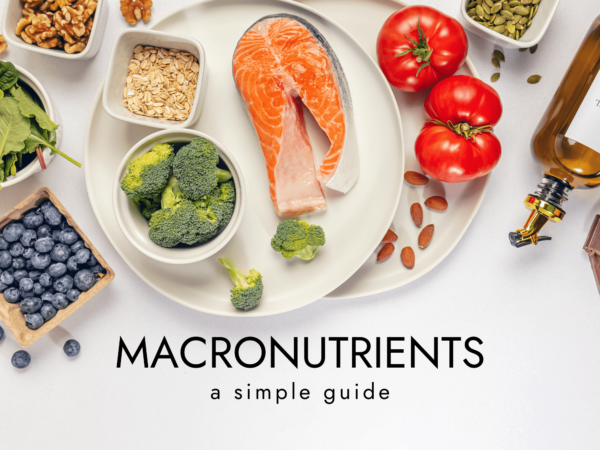Welcome to your comprehensive guide on nurturing your child’s development through nutrients for growth.
This article will explore the fascinating world of “nutrients for growth,” ensuring you have all the knowledge and tools needed to empower your child to reach their full physical potential. Imagine this as an extensive consultation with a dedicated nutrition coach, where we will explore the vital role of nutrition in child growth, understand the key nutrients essential for your child’s development, and provide practical tips for ensuring they receive the proper nutrients.
By the end of this article, you’ll have the confidence to guide your child on their path to robust health.

The Power of Nutrients for Growth
A child’s growth is a wondrous journey. As parents and caregivers, we play a pivotal role in ensuring our children develop into their healthiest, strongest selves. This begins with a fundamental understanding of the role of nutrition in child growth. It’s not just about keeping their tummies full; it’s about providing the right nutrients for growth to build strong bones, healthy muscles, and resilient organs. This article will be your trusted resource to help you navigate this journey.
The Role of Nutrition in Child Development
Let’s start by understanding how nutrition influences your child’s growth. Food is intricately linked to physical development from the moment your child is born. The proper nutrients are the building blocks that construct the framework for their growth.
Proper nutrition fuels their body, providing the energy for play, learning, and all those activities that keep them bustling with energy. But it goes beyond that – it’s about laying the groundwork for a lifetime of health. Think of it as constructing a solid and sturdy house. Just as you wouldn’t build a house without suitable materials, you wouldn’t want your child’s body to develop without the proper nutrition.

Key Nutrients for Growth
Macronutrients
Protein: Let’s start with protein. This nutrient is often referred to as the building block of life for a reason. It is essential for muscle development, an integral part of your child’s growth. Encourage your child to include lean meats, dairy products, and legumes to provide the essential amino acids their body requires.
Carbohydrates: Carbs are your child’s primary energy source. They fuel their active lives and are crucial to keeping them running, jumping, and playing all day long. Opt for whole grains, fruits, and vegetables to provide long-lasting energy.
Healthy Fats: While we often associate fats with weight concerns, they are also crucial nutrients for growth. They help absorb fat-soluble vitamins and are vital for various bodily functions. Sources like avocados, nuts, and oily fish are packed with healthy fats that support your child’s growth.
Micronutrients
Calcium: This is the cornerstone of strong bones and teeth. Calcium is a mineral that your child’s body requires in substantial quantities. Ensure your child’s diet includes dairy products, green leafy vegetables, and fortified foods to provide the calcium they need for healthy bones.
Vitamin D: Vitamin D is crucial for calcium absorption. Your child can get this nutrient from sunlight and fortified foods. It’s like the key that unlocks the door to strong bones and overall growth.
Iron: Iron is responsible for oxygen transport, vital for growth and energy production. Iron-rich foods like red meat, poultry, and beans are excellent sources.
Zinc: Zinc plays a crucial role in immune function and growth. It’s found in various foods, including lean meats, nuts, and dairy products.
Vitamin A: Vitamin A is essential for overall growth, immunity, and maintaining good vision. Encourage your child to consume foods like sweet potatoes, carrots, and dark leafy greens, as these are rich sources of Vitamin A.
Sources of Essential Nutrients for Growth
Now that we’ve covered these essential nutrients for growth let’s explore how to ensure your child gets them daily. Nurturing their growth doesn’t have to be complicated; it can be as easy as making mindful food choices. We’ve created a simple menu to help you include these essential nutrients in your child’s diet.
Breakfast
Begin the day with a balanced meal that incorporates several vital nutrients. Try whole-grain cereal with milk and a side of fresh fruit. This combination provides carbohydrates, protein, calcium, and a range of vitamins.
Lunch
At lunchtime, focus on a well-rounded sandwich with a side of greens. A turkey and avocado sandwich on whole-grain bread with a spinach salad offers carbohydrates, protein, healthy fats, and essential vitamins and minerals.
Dinner
Aim for a balanced meal for dinner, like grilled salmon, quinoa, and steamed broccoli. This combination provides protein, healthy fats, iron, and a host of vitamins, including vitamins A and D.

Nutritional Requirements for Different Age Groups
As your child grows, their nutritional requirements change. A toddler has different needs compared to a teenager. Understanding and adapting to these changing needs is essential to support your child’s development. Let’s explore the varying nutrient requirements for different age groups.
Infants
Infants primarily rely on breast milk or infant formula in the first year of life. These sources provide all the necessary nutrients for growth.
Toddlers and Preschoolers
As children transition to solid foods, providing a diet rich in protein, healthy fats, carbohydrates, and essential vitamins and minerals is vital. Snacking on fruits and vegetables ensures they receive important micronutrients.
School-Age Children
School-age children have increased energy requirements due to their growth and physical activities. Balanced meals and a variety of nutrient-rich foods are crucial.
Teenagers
During adolescence, teenagers experience rapid growth and development. Their nutrient needs continue to evolve, and supporting this phase with a well-balanced diet is essential.
The Impact of Nutrient Deficiencies
Understanding nutrient deficiencies is the first step to prevention. Being aware of the potential consequences of deficiencies can prompt you to take action. Nutrient deficiencies can profoundly impact your child’s growth, and they are more common than you might think.
Calcium Deficiency
A lack of calcium can result in weakened bones, increasing the risk of fractures and conditions like rickets.
Vitamin D Deficiency
Vitamin D deficiency can lead to weak bones, muscle pain, and a higher risk of infections.
Iron Deficiency
Iron deficiency can cause anaemia, resulting in fatigue, weakness, and reduced physical growth.
Zinc Deficiency
Zinc deficiency can impair growth, lead to delayed sexual maturation, and affect the immune system.
Vitamin A Deficiency
Vitamin A deficiency can impact growth and lead to vision problems.
By understanding these potential consequences, you can proactively ensure your child receives the needed nutrients for growth.

Practical Tips for Ensuring Adequate Nutrient Intake
Ensuring your child receives the proper nutrients for growth doesn’t have to be a daunting task. It can be enjoyable and achievable with some practical tips and strategies.
Balanced Meal Planning
Design balanced meals that incorporate a variety of foods to cover all essential nutrients for growth. Create a weekly meal plan to streamline the process.
Here are a few examples of balanced meal planning for different times of the day:
Breakfast:
1. Classic Oatmeal: Start with a bowl of oatmeal topped with sliced bananas, a sprinkle of chia seeds, and a drizzle of honey. Serve it with a glass of low-fat milk or a dairy-free alternative.
- Macronutrients: Carbohydrates (from oats and bananas), Protein (from oats and milk/dairy-free alternative), Healthy Fats (from chia seeds and a drizzle of honey)
- Micronutrients: Dietary Fiber, B Vitamins (e.g., Thiamin, Niacin), Minerals (e.g., Magnesium), Vitamins (e.g., Vitamin C from the banana)
2. Protein-Packed Scramble: Prepare a vegetable and cheese omelette with whole-grain toast. Include a side of Greek yoghurt with fresh berries.
- Macronutrients: Protein (from eggs and cheese), Carbohydrates (from whole-grain toast), Healthy Fats (from eggs and cheese)
- Micronutrients: Proteins (essential amino acids), Dietary Fiber (from whole-grain toast), Calcium (from cheese), Vitamins (e.g., B Vitamins from eggs)
3. Smoothie Bowl: Blend spinach, frozen berries, a banana, and Greek yoghurt for a nutrient-rich smoothie. Top it with granola, nuts, and seeds for added texture and flavour.
- Macronutrients: Carbohydrates (from fruits and yoghurt), Protein (from Greek yoghurt), Healthy Fats (from nuts and seeds)
- Micronutrients: Dietary Fiber, Vitamins (e.g., Vitamin C from berries, Vitamin K from spinach), Minerals (e.g., Potassium), Calcium (from Greek yoghurt), Omega-3 fatty acids (from chia seeds and nuts)
Lunch:
1. Chicken and Avocado Wrap: Fill a whole-grain tortilla with grilled chicken, sliced avocado, lettuce, and a drizzle of olive oil. Serve with a side of carrot sticks and hummus.
- Macronutrients: Protein (from grilled chicken), Healthy Fats (from avocado and olive oil), Carbohydrates (from whole-grain tortilla and vegetables)
- Micronutrients: Vitamins (e.g., Vitamin C from avocado and lettuce), Dietary Fiber, Healthy Monounsaturated Fats (from avocado and olive oil), Proteins (from chicken), Minerals (e.g., Potassium from avocado)
2. Quinoa Salad: Create a salad with cherry tomatoes, cucumber, feta cheese, and a lemon vinaigrette. Add grilled shrimp or chickpeas for protein.
- Macronutrients: Carbohydrates (from quinoa), Protein (from grilled shrimp or chickpeas), Healthy Fats (from the vinaigrette)
- Micronutrients: Dietary Fiber, B Vitamins (e.g., Folate from quinoa), Vitamins (e.g., Vitamin C from tomatoes, Vitamin K from cucumbers), Calcium (from feta cheese), Healthy Fats (from the vinaigrette)
3. Peanut Butter and Banana Sandwich: Make a whole-grain peanut butter and banana sandwich with a side of celery sticks and almond butter for dipping.
- Macronutrients: Protein (from peanut butter), Healthy Fats (from peanut butter), Carbohydrates (from whole-grain bread and banana)
- Micronutrients: Proteins (essential amino acids), Dietary Fiber, Vitamins (e.g., Vitamin B6 from banana), Minerals (e.g., Potassium from banana), Healthy Fats (from peanut butter)
Dinner:
1. Grilled Chicken: Marinate chicken breast in lemon juice, olive oil, and fresh herbs, then grill to perfection. Serve it with a side of quinoa and roasted Vegetables. A small salad with fresh greens, cherry tomatoes, and cucumber with a light vinaigrette dressing complements the meal.
- Macronutrients: Protein (from grilled chicken), Carbohydrates (from quinoa and vegetables), Healthy Fats (from olive oil), Dietary Fiber
- Micronutrients: Vitamins (e.g., Vitamin C from salad ingredients), Minerals (e.g., Magnesium from quinoa), Vitamins (e.g., Vitamin K from leafy greens), Antioxidants, Dietary Fiber, Healthy Fats
2. Vegetable Stir-Fry: Stir-fry a mix of colourful vegetables with tofu or lean beef in a light soy sauce and ginger sauce. Serve it with brown rice or whole-wheat noodles.
- Macronutrients: Protein (from tofu or lean beef), Carbohydrates (from vegetables and rice/noodles), Healthy Fats (from stir-fry sauce)
- Micronutrients: Dietary Fiber, Vitamins (e.g., Vitamin C from vegetables), Minerals (e.g., Potassium), Proteins, Healthy Fats
3. Mediterranean Platter: Create a Mediterranean-inspired platter with whole-grain pita bread, hummus, tabbouleh, grilled chicken or falafel, and a variety of fresh vegetables like cucumbers, tomatoes, and olives.
- Macronutrients: Protein (from grilled chicken or falafel), Carbohydrates (from pita bread and tabbouleh), Healthy Fats (from hummus and olive oil)
- Micronutrients: Dietary Fiber, Vitamins (e.g., Vitamin C from vegetables), Minerals (e.g., Potassium), Proteins, Healthy Fats, Antioxidants
Nutrient-Dense Snacks
Offer nutrient-dense snacks like cut-up vegetables with hummus or a handful of mixed nuts and dried fruits. These options provide a variety of essential nutrients for growth and are convenient for on-the-go nibbling.
Snacks:
1. Greek Yogurt Parfait: Layer Greek yoghurt with granola and mixed berries in a glass or bowl for a satisfying and nutrient-rich snack.
- Macronutrients: Protein (from Greek yoghurt and granola), Carbohydrates (from granola and mixed berries), Healthy Fats (from granola and nuts)
- Micronutrients: Calcium (from Greek yoghurt), Dietary Fiber (from granola and berries), Antioxidants (from mixed berries), Healthy Fats (from nuts)
2. Apple Slices with Almond Butter: Slice an apple and serve it with a side of almond or peanut butter for a combination of fibre and healthy fats.
- Macronutrients: Carbohydrates (from apple slices), Healthy Fats (from almond or peanut butter)
- Micronutrients: Dietary Fiber (from apple slices), Vitamins (e.g., Vitamin E from almond butter), Minerals (e.g., Potassium from apple slices), Healthy Fats
3. Veggie Sticks and Guacamole: Enjoy celery, carrot, and cucumber sticks with a tasty guacamole dip.
- Macronutrients: Healthy Fats (from guacamole), Carbohydrates (from vegetable sticks)
- Micronutrients: Dietary Fiber (from vegetable sticks), Vitamins (e.g., Vitamin C from vegetables), Minerals (e.g., Potassium), Healthy Fats (from guacamole)
These meal options offer a combination of macronutrients (carbohydrates, proteins, healthy fats) and a variety of micronutrients that contribute to a balanced and nutritious start to the day. The specific nutrient content may vary depending on portion sizes and ingredient choices.
These are just a few examples of balanced meal planning, focusing on various nutrients and food groups to provide a well-rounded and nutritious diet. Tailor your meals to your dietary preferences and any specific nutritional needs, and remember to consider portion sizes for appropriate calorie intake.

Creative Recipes: Nourishing Adventures in the Kitchen
Why stick to the same old meals when you can embark on culinary adventures with your child, exploring a world of nutrient-rich and delicious ingredients? Getting creative in the kitchen enhances the nutritional value of your child’s diet and adds an element of excitement to mealtime.
Breakfast Brilliance: The Smoothie Packed with Nutrients for Growth
Start your child’s day with a burst of energy by creating a nutrient-packed smoothie. Picture this: a vibrant blend of fresh spinach, ripe banana, creamy Greek yoghurt, and a drizzle of natural honey. Not only does this concoction provide essential nutrients for growth, but it also transforms the breakfast routine into an enjoyable and interactive experience for your child.
Spinach: Packed with essential vitamins and minerals, spinach offers a hearty dose of dietary fibre, vitamin K, vitamin A, and folate. It’s a fantastic way to sneak in some greens without sacrificing taste.
Banana: This naturally sweet fruit is rich in carbohydrates, dietary fibre, and an array of vitamins, particularly vitamin C and vitamin B6. It adds a delightful creaminess and a touch of natural sweetness to the smoothie.
Greek Yoghurt: Greek yoghurt is a protein powerhouse, offering probiotics for a healthy gut, calcium for strong bones, and a satisfying creaminess that makes the smoothie wonderfully thick.
Honey: A drizzle of honey adds a touch of sweetness and brings antioxidants to the mix. It’s a healthier alternative to refined sugar.
Creating this smoothie together can be an educational experience. You can involve your child in selecting the ingredients, washing the spinach, peeling the banana, and blending everything into a vibrant, green masterpiece. It’s an opportunity to teach your child about the importance of nutrient-rich foods and how they contribute to their growth and overall well-being.
Kitchen Adventures: Exploring New Flavours and Textures
Beyond smoothies, you can explore a plethora of other nutrient-rich recipes. Get inspired by seasonal fruits and vegetables, try whole grains like quinoa or brown rice, and experiment with lean proteins such as chicken, tofu, and legumes.
Quinoa Breakfast Bowls: Create a custom breakfast bowl by combining cooked quinoa with fresh fruit, a dollop of Greek yoghurt, and a sprinkle of nuts or seeds. This introduces your child to quinoa’s nutritional benefits and encourages them to embrace diverse textures and flavours.
Homemade Energy Bars: Bake your own energy bars using oats, dried fruits, nuts, and seeds. These bars are a tasty snack and an opportunity to learn about the nutritional powerhouse of nuts, seeds, and whole grains.
Vegetable “Rainbow” Salads: Craft vibrant and visually appealing salads using a variety of colourful vegetables. Encourage your child to choose their favourites and toss them together in a delicious salad. It’s an exploration of vitamins, minerals, and antioxidants present in different vegetables.
Engaging in kitchen adventures with your child offers a unique opportunity to bond, learn, and nurture their growth through a deeper understanding of nutrition. Exploring new ingredients and flavours provides your child with valuable life skills and a lifelong appreciation for healthy, delicious food. It’s a journey that nourishes their body, mind, and taste buds.

Meal Preparation Involvement
Engage your child in meal preparation. It can be a fun and educational experience for them. They’ll be more likely to enjoy foods they’ve helped create, which can encourage healthier eating habits.
For a comprehensive guide on how to make meal preparation a fun and educational activity for your child, we invite you to explore our previously published post, “Nutrition for Kids: Making Healthy Eating Fun for Kids.” In this resource, you’ll find a wealth of tips and creative ideas to engage your child in the kitchen, ensuring that they develop healthier eating habits and have a blast doing it.
Closing Thoughts: Your Key Role in Nurturing Growth
As we wrap up this extensive exploration of “nutrients for growth,” it’s essential to reiterate the significance of your role in your child’s life. You are their most valuable nutrition coach, guiding them towards a future of health and strength. The knowledge you’ve gained here empowers you to make informed choices that will shape your child’s development.
By consistently providing your child with the proper nutrients for growth, you ensure they have the best chance at developing into their healthiest, strongest selves.
Join the Nutrient-Powered Journey: Let’s Grow Stronger Together
We encourage you to share this knowledge with other parents and caregivers, as the journey to optimal growth is a collective effort. Stay tuned for our next session to dive deeper into age-specific nutritional requirements. Together, we’ll continue nurturing your child’s journey towards growing up strong and healthy, with “nutrients for growth” at the forefront of your approach.




